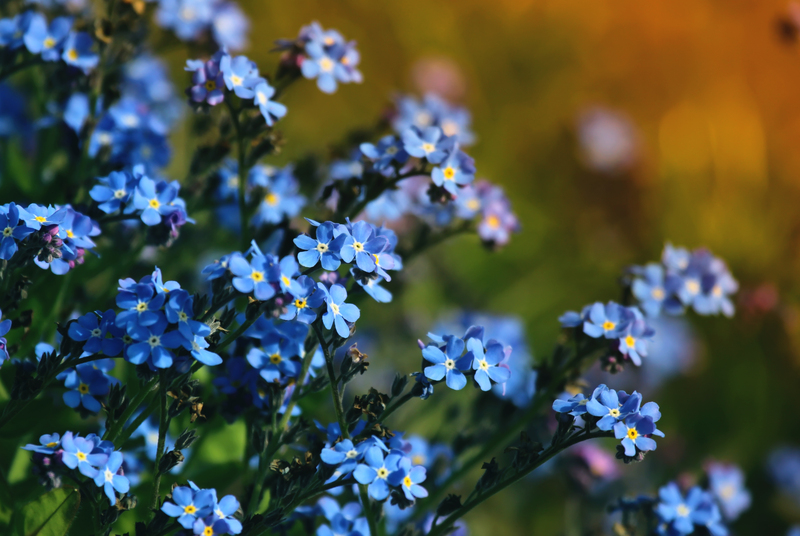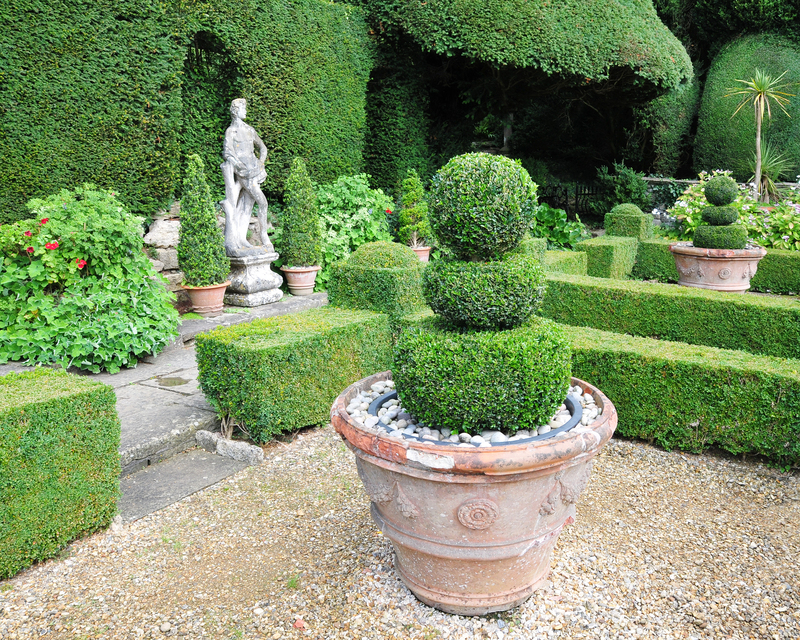Guide to Thriving Orchids in Any Environment
Posted on 20/05/2025
Orchids have a reputation for being exotic and challenging, but with the right knowledge, anyone can help these beautiful plants flourish. Whether you're cultivating orchids indoors, outdoors, or in greenhouses, this comprehensive guide will empower you to grow thriving orchids in any environment. By understanding their unique requirements and following proven care techniques, you'll be rewarded with stunning blooms year after year.
Understanding Orchids: An Overview
Orchids belong to one of the largest and most diverse plant families in the world, Orchidaceae. With over 25,000 species and many more hybrids, they vary greatly in appearance, growing habits, and environmental preferences. Despite this diversity, most orchids share some common needs. Grasping the basics is the first step toward ensuring your orchids thrive in every environment.
Popular Orchid Types for Every Environment
- Phalaenopsis (Moth Orchids): Ideal for beginners, they adapt well to home environments.
- Cattleya: Famous for their vibrant flowers and fragrant scent.
- Dendrobium: Flexible species, thriving in various climates.
- Oncidium: "Dancing Lady" orchids with distinctive flowers.
- Vanda: Showy orchids favored for their striking blooms.
Each type presents unique care requirements, making it crucial to match the variety with your environmental conditions.

Essential Factors for Orchid Success
To help orchids thrive, focus on six critical aspects:
- Light
- Watering
- Humidity
- Temperature
- Air Circulation
- Potting Mix and Repotting
Light: Finding the Right Balance
Light is one of the most important factors for orchid health. Orchids require bright, indirect light to bloom successfully. Too much direct sun will scorch the leaves, while too little stunts growth and bud development.
- Indoor Environments: Place orchids near east or south-facing windows. Use sheer curtains to diffuse sunlight.
- Outdoor Environments: Grow orchids under the dappled shade of trees or shade cloths to avoid intense, midday sun.
- Artificial Lighting: LED grow lights can supplement natural light, enabling orchids to flourish even in darker rooms.
Tip: Leaf color provides clues. Healthy orchid leaves should be bright green. Dark green leaves may indicate low light, while yellowish or reddish tones suggest excessive light.
Watering: Striking the Perfect Moisture Balance
Overwatering is the leading cause of orchid failure. These plants dislike having wet roots for extended periods. Instead, most orchids prefer their potting material to dry out slightly between waterings.
- Check the Potting Medium: Water when the top inch feels dry. Sphagnum moss dries slower than bark-based mixes.
- Use Lukewarm Water: Cold water can shock the roots. Always water in the morning for rapid evaporation.
- Drain Thoroughly: Ensure pots have ample drainage holes. Never let orchids sit in standing water.
Less is often more when watering orchids. Each variety has slightly different needs, so get to know your specific plant's requirements.
Humidity: Mimicking Natural Environments
Orchids thrive in environments with 40-70% humidity. Most indoor spaces are drier, especially in winter. Increasing humidity helps prevent leaf dehydration and encourages strong root growth.
- Humidifiers: Best for large collections or dry climates.
- Humidity Trays: Place a shallow tray filled with water and pebbles beneath the pot to raise local humidity.
- Misting: Regularly mist leaves, but avoid over-wetting flowers and crown.
- Grouping Plants: Cluster several orchids together to create a microclimate.
Tip: Monitor humidity with a hygrometer to maintain the ideal range for your lovely orchids.
Temperature: Adapting to Seasonal Shifts
Orchids generally prefer moderate daytime temperatures (65-80?F / 18-27?C) and slightly cooler nights (55-65?F / 13-18?C). However, the ideal range varies between species.
- Warm-Growing Orchids: Thrive year-round in warmer homes or heated greenhouses.
- Cool-Growing Orchids: Require chilly nights to trigger flowering.
- Transitional Environments: Some species, like Dendrobium, adapt to wider temperature fluctuations.
Avoid placing orchids near radiators or cold drafts, as sudden shifts can stress the plants.
Air Circulation: Fresh Air for Healthy Orchids
Poor air movement encourages mold, rot, and pests. In their natural habitat, orchids benefit from gentle breezes. Recreate this at home:
- Use Oscillating Fans: Place fans on low settings to maintain constant, gentle airflow.
- Ventilation: Open windows when weather permits.
- Avoid Stagnant Corners: Rotate plants occasionally for even air distribution.
Potting Mix and Repotting Best Practices
Unlike typical houseplants, most orchids thrive when planted in chunky, loose media rather than regular soil. Common orchid mix ingredients include:
- Bark chips
- Sphagnum moss
- Charcoal
- Perlite
- Coconut husk
Repot your orchid every 1-2 years to prevent root rot and allow fresh airflow. Choose pots with ample drainage and clear sides when possible (for epiphytic varieties), as they mimic natural growing conditions.
Orchid Care by Environment
Indoors: Making Orchids Bloom at Home
- Placement: East-facing windows provide gentle morning light. Supplement with grow lights in dimmer locations.
- Humidity: Use trays or small humidifiers, especially in winter.
- Regular Checks: Examine for pests such as mealybugs and spider mites.
Orchids can be beautiful centerpieces for living rooms, kitchens, or home offices. With a little attention to light, water, and humidity, indoor growers can enjoy consistent blooms cycles.
Outdoors: Adapting to Natural Conditions
Many orchid enthusiasts choose to grow their plants outdoors during warm months. Consider:
- Sheltered Position: Protect from harsh wind and rain.
- Dappled Shade: Under trees is ideal for mimicking jungle canopies.
- Insect Prevention: Hang orchids or use netting to discourage pests.
- Acclimation: Gradually move plants outside in spring to prevent shock.
Greenhouses: The Ultimate Orchid Environment
A greenhouse provides controlled temperature, humidity, and lighting--ideal for serious growers. Key considerations include:
- Automatic Ventilation: Prevents overheating.
- Evaporative Coolers: Maintain consistent humidity levels.
- Supplemental Lighting: For rare or high-light varieties.
- Pest Management: Monitor actively, as glasshouses attract aphids, slugs, and mites.
Your greenhouse can become a true orchid paradise with a bit of planning and regular maintenance.
Feeding and Fertilizing Orchids
Orchids are not heavy feeders but benefit from regular, gentle fertilization.
- Use a Balanced Orchid Fertilizer: Apply every 2-4 weeks, diluted to half the recommended strength.
- "Weakly, Weekly" Approach: Small, frequent doses prevent salt buildup.
- Flush Monthly: Rinse pots thoroughly with water to prevent fertilizer residue.
- Special Needs: Some types, like Cattleyas, require extra magnesium (Epsom salts) occasionally.
Tip: Reduce feeding in winter or during dormancy to prevent over-fertilizing your thriving orchids.
Common Orchid Problems and Solutions
Even the healthiest orchids can face challenges. Being proactive leads to the best outcomes:
- Yellow Leaves: Usually due to overwatering, root rot, or sudden environmental changes.
- No Blooms: Check for insufficient light, inappropriate temperatures, or lack of seasonal changes.
- Pests: Treat mealybugs, aphids, and spider mites promptly using insecticidal soap or neem oil.
- Root Rot: Repot immediately in fresh, dry media and trim dead roots.
- Bacterial and Fungal Diseases: Remove affected tissue quickly and treat with an orchid-safe fungicide.
Prevention is always easier than cure! Regular examination, proper hygiene, and a stable environment are your best defenses.
Seasonal Orchid Care Tips
Caring for orchids throughout the year ensures they adapt smoothly to changing climates:
- Spring/Summer: Increase watering and feeding. Provide extra light and humidity as growth accelerates.
- Autumn: Gradually reduce water, transition outdoor orchids inside before nighttime temperatures fall.
- Winter: Limit watering and fertilizer. Increase humidity indoors and avoid cold drafts.
Many orchids initiate spikes in response to cool nights and short days--another reason to mimic nature's rhythms.
Propagating Your Thriving Orchid Collection
Advanced growers often wish to multiply their favorite orchids. The main methods include:
- Keiki ("Baby" Plants): Some orchids produce offshoots that can be potted separately.
- Division: Mature orchids with multiple pseudobulbs or crowns can be split during repotting.
- Stem Cuttings: Works well for some Dendrobiums and Epidendrums.

Expert Tips for Truly Flourishing Orchids
- Observe Regularly: Pay close attention to subtle changes in your orchid's leaves and roots.
- Be Patient: Orchids grow more slowly than most houseplants. Don't despair if blooms take a season or more to appear.
- Keep Records: Note temperatures, watering schedules, and bloom times. This helps refine your care regime year after year.
- Join an Orchid Society: Local clubs and online communities offer guidance, rare varieties, and troubleshooting assistance.
Conclusion: Mastering the Art of Thriving Orchids in Any Environment
Orchids reward careful cultivation with spectacular long-lasting blooms and striking foliage. By understanding their origins, matching their fundamental needs, and adapting your care through the seasons, you can grow thriving orchids anywhere--from a city apartment to a shaded garden or a purpose-built greenhouse.
Approach orchid care with curiosity and patience, and you'll soon master the secrets to an enviable, flourishing orchid collection. Whether you are a beginner or seasoned enthusiast, these beautiful plants will bring beauty and satisfaction to any environment for years to come.

